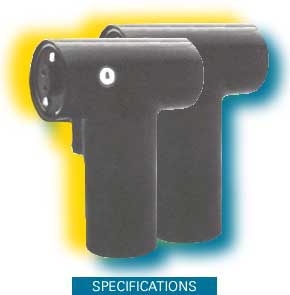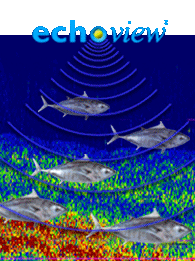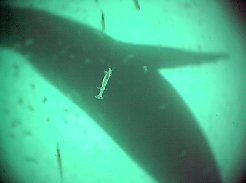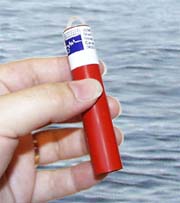
The MATS system is based around a multibeam sonar. We have field tested the Simrad SM2000 Multibeam Sonar with 180-degree head for this purpose (November field trial). The SM2000 operates at 200kHz, has 128 electronically focused returing beams that cover a 180 swath of the ocean that is either 20 or 1.5 degrees wide. Each beam is subdivided into 782 intervals, and the backscatter strength in each interval of each beam is digitally recorded.
The SM2000 has principally been used for detailed bottom mapping and quantitative midwater fisheries assessment.

The sonar head will be mounted onto heavy duty Pan and Tilt unit that will allow the sonar head to be remotely positioned. The PT-25 (ROS, Inc) can rotated 170-degrees CW and CCW in the horizontal and vertical directions.
In order to know where the sonar head is pointing at all times, we will also need to incorporate information on boat motion. The digital output from a Gyroscopic / inertial sensor will be incorporated into header information of the multibeam images.

The initial analyses of the backscatter data from the multibeam sonar head will be analyzed using EchoView 3.1 Fisheries Acoustic Software with all appropriate modules. We will work with Ian Higginbottom to incorporate boat motion and positioning information into Echoview's analytical functions.
Additional, purpose built software, will be designed by Larry Mayer and colleagues at the University of New Hampshire





